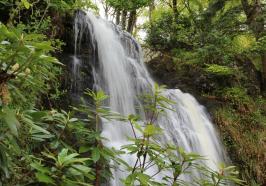Grounds and waterfall
Derwentwater Independent Hostel is surrounded by a fascinating variety of wild-life, woodland, and flowing water. In the 17 acres of grounds, we have an impressive array of trees, a large grass area (half of which is a meadow in May and June, attracting lots of butterflies, moths, and dragon flies), many different types of birds, old footpaths from the late eighteenth century, yummy wild raspberries and blackberries (at certain times of the year), a 108ft high waterfall, and a small-scale hydro-electric power plant.
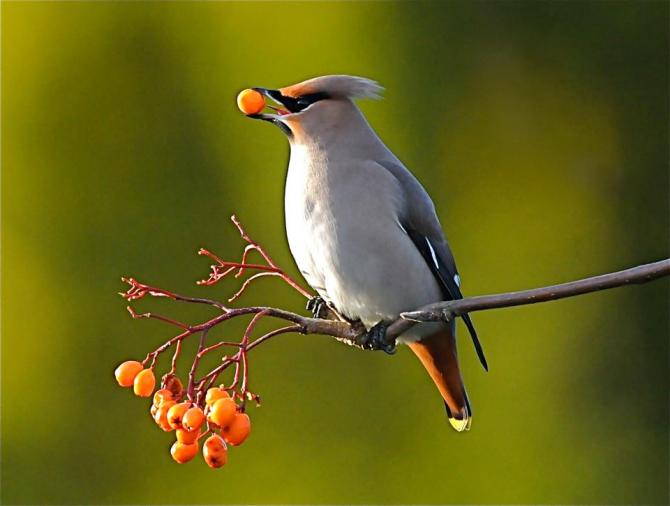
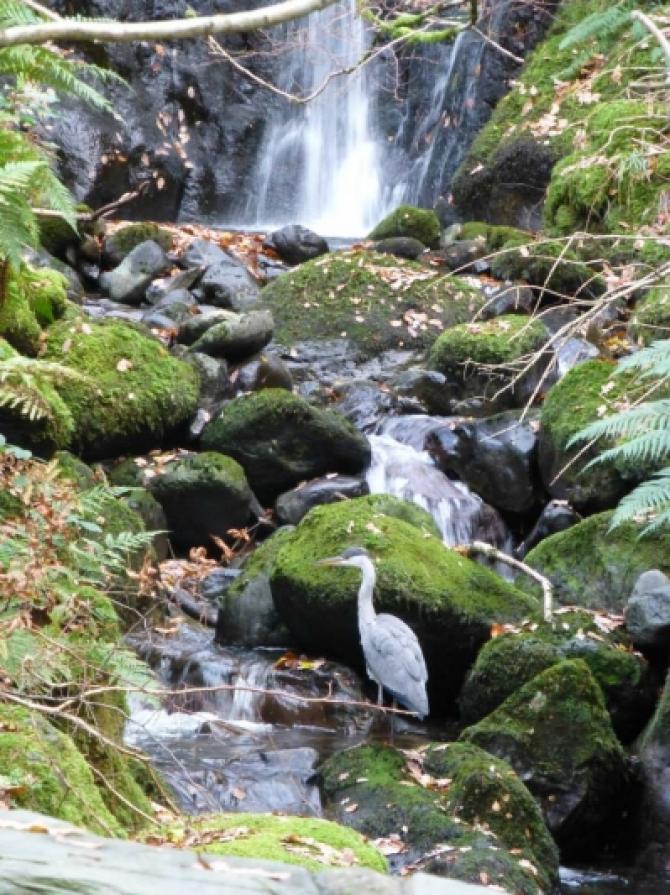
Red squirrels and roe deer are regular visitors to our grounds, and you may also see badgers, otters and bats if you look carefully.
The waterfall, known as Barrow Cascade, is fed by Ashness Beck, with water gushing down from the Ashness Fells, under Ashness Bridge, to Derwent Water. Once the water enters our grounds, the beck becomes known as Barrow Beck.
There is a peaceful footpath which follows the course of Barrow Beck, allowing you to walk through our grounds to Ashness Bridge. This footpath provides excellent views of the waterfall.
Flanked by National Trust land on all sides, the grounds of Derwentwater Independent Hostel provide a tranquil haven for wild-life and a wonderful place for guests to relax, learn, and explore.
The history of the waterfall
In 1787 the eccentric and wealthy bachelor, Joseph Pocklington, bought the land on which Barrow House now stands. Barrow Beck and its cascades were a great attraction for Pocklington, and he named his new building project Barrow Cascade House. Pocklington laid the foundation stone of Barrow House in 1787 and he also made some alterations to the cascades, using gunpowder and small revetments to channel the flow, aiming to provide a better view of the waterfall from the rear of the house. The Romantic poet Samuel Taylor Coleridge commented that, in the Pocklington domain, Art beats Nature.
In December 2015 Storm Desmond caused considerable damage to our grounds. The banks of the beck were severely eroded, and the Penstock pipe, which delivers water to the hydro-electric plant, was ripped away from its attachment to the dam. We had to close to guests for 7 weeks, but luckily there was no damage to the house itself. You can find out more about Storm Desmond and its effects on the hostel in this powerpoint presentation (click here). It is now back up and whirring, and should provide about 30% of the hostel's annual electricity consumption.
Tree and bird species that can be found in our grounds
Birds
All of these birds actually land in our grounds - many more just fly overhead! There are also lots of bird species on Derwent Water, just a few minutes' walk away. Click on the bird name to find out more about the bird and listen to its song.
Robin, Jay, Nuthatch, Wren, Dunnock, Blue tit, Great tit, Long-tailed tit, Treecreeper, Great Spotted, and Green woodpeckers, Mistle thrush, Song thrush, Blackbird, Fieldfare, Redwing, Grey wagtail, Pied wagtail, Mallards, Chaffinch, Greenfinch, Goldfinch, Bullfinch, Redstart, Pied flycatcher, Tawny owl, Kestrel, Sparrowhawks, Woodpigeon, Wood warbler, Heron, Dipper, Stock Dove
Trees
The male yew tree near the top of the driveway has been classified as ‘veteran’ (over 500 years old) and is believed to be anywhere between 500 and 900 years old, predating the construction of the house. It is registered on the database of Ancient and Veteran Yew Trees in Great Britain, maintained by the Ancient Yew Group. It also appears in the Cumbrian Yew Book (1999) by Ken Mills, which explores 27 important yew sites in Cumbria. The female yew tree near Barrow Beck is multi-stemmed and harder to measure, but it is believed to be much younger, perhaps planted when the house was built in 1787.
Non-native trees
Many of the trees in our grounds were planted for Joseph Pocklington in the late eighteenth century. He introduced several rare foreign trees. These include:
Western hemlock, Cherry plum, Lawson cypress, Coast redwood, Adam's laburnum, Voss's laburnum, Japanese cedar, and Horse Chestnut.
-
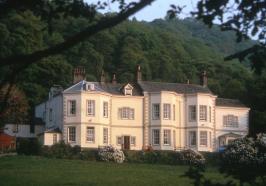 Derwentwater Independent Hostel
Derwentwater Independent Hostel -
 Looking down on the hostel
Looking down on the hostel -
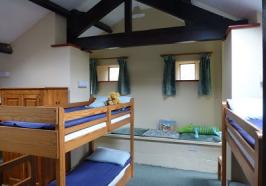 A bedroom in the modern annexe
A bedroom in the modern annexe -
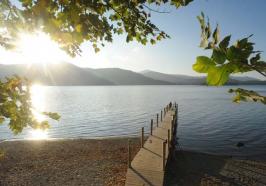 Evening light on Derwent Water
Evening light on Derwent Water -
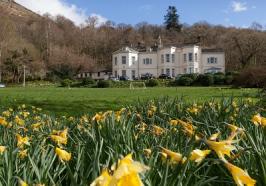 Barrow House in Spring
Barrow House in Spring -
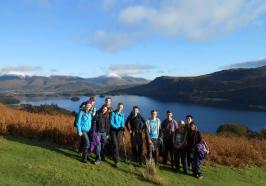 Inspiring local walks
Inspiring local walks -
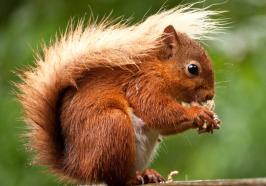 Red squirrels can be seen in our grounds
Red squirrels can be seen in our grounds -
View of Derwentwater Independent Hostel from a kayak
-
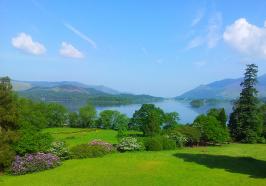 Spring-time view from Derwentwater Independent Hostel
Spring-time view from Derwentwater Independent Hostel -
 Room One, our largest dormitory
Room One, our largest dormitory -
Autumn colours by the waterfall
-
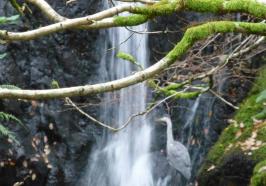 A heron next to our waterfall
A heron next to our waterfall -
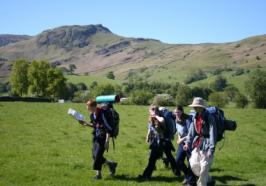 Spectacular local walks
Spectacular local walks -
You can see Derwent Island from the hostel grounds. It used to be owned by Joseph Pocklington, the wealthy bachelor who built Barrow House.
-
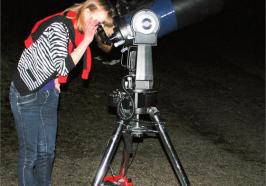 Astronomy workshops at Derwentwater Independent Hostel
Astronomy workshops at Derwentwater Independent Hostel -
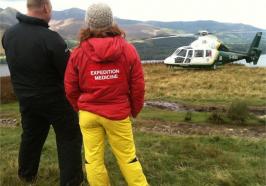 Expedition Medicine training at Derwentwater Indepedent Hostel
Expedition Medicine training at Derwentwater Indepedent Hostel -
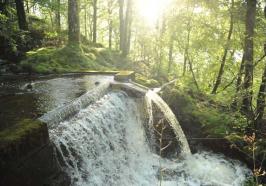 The dam of the hydro-electric plant in the Derwentwater Independent Hostel grounds
The dam of the hydro-electric plant in the Derwentwater Independent Hostel grounds -
Walking up the fells behind the hostel
-
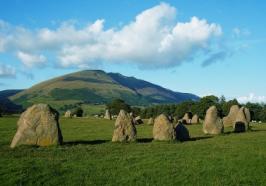 Castlerigg Stone Circle - a short walk from the hostel
Castlerigg Stone Circle - a short walk from the hostel -
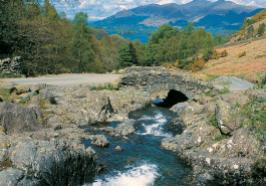 Ashness Bridge - at the top of the hostel waterfall path
Ashness Bridge - at the top of the hostel waterfall path -
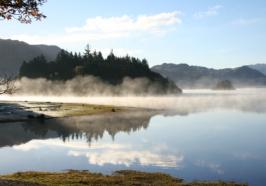 Mist on Derwentwater
Mist on Derwentwater -
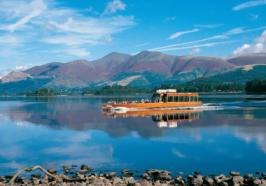 Keswick Launch on Derwentwater
Keswick Launch on Derwentwater -
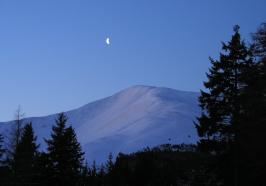 Clear night sky
Clear night sky -
View of Skiddaw Range from Falcon Crag (above the hostel)
-
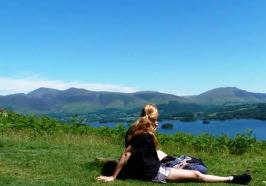 Half way up Cat Bells
Half way up Cat Bells -
 Keswick Christmas lights
Keswick Christmas lights -
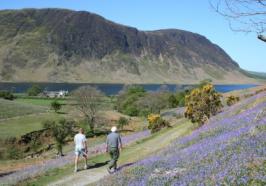 Bluebells near Buttermere
Bluebells near Buttermere -
 Many of our guests enjoy walking on the fells around Borrowdale
Many of our guests enjoy walking on the fells around Borrowdale -
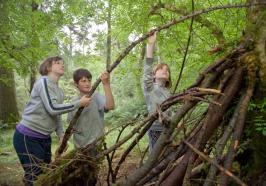 Building shelters in our woodland
Building shelters in our woodland -
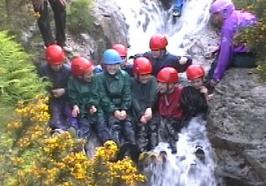 Our groups often enjoy adventurous activities in the Borrowdale Valley
Our groups often enjoy adventurous activities in the Borrowdale Valley -
.jpg) Sunset from the terrace in April
Sunset from the terrace in April -
.jpg) Some of the staff and volunteers with our giant Easter Egg
Some of the staff and volunteers with our giant Easter Egg -
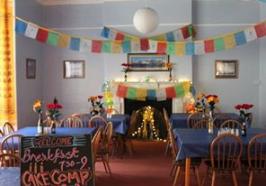 The dining room decorated for a wedding in 2014
The dining room decorated for a wedding in 2014 -
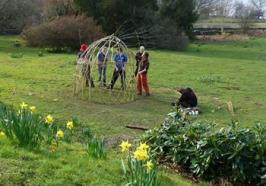 Conservation volunteers making a willow shelter in our grounds 2014
Conservation volunteers making a willow shelter in our grounds 2014 -
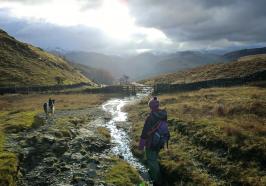 A local walk around Watendlath
A local walk around Watendlath -
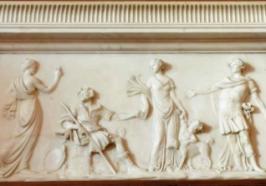 A close-up of the fireplace in Room One
A close-up of the fireplace in Room One -
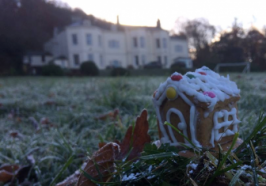 Gingerbread house in front of the real thing.
Gingerbread house in front of the real thing. -
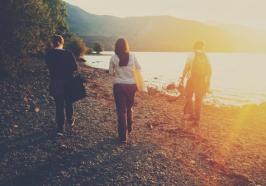 Staff take an evening walk along the lake shore.
Staff take an evening walk along the lake shore. -
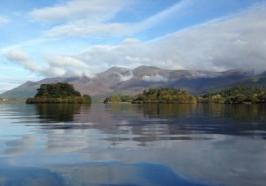 A very calm day on Derwent Water.
A very calm day on Derwent Water. -
A Mandarin duck on the lake shore.
-
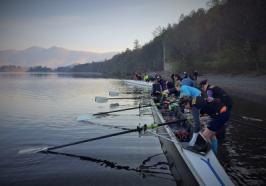 York Rowing Club training on Derwent Water during their stay with us.
York Rowing Club training on Derwent Water during their stay with us. -
Bugle flower in the hostel grounds
-
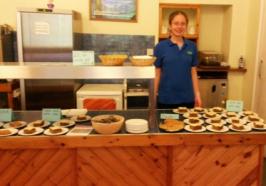 Tea and cake in the servery
Tea and cake in the servery -
 Winter walking
Winter walking -
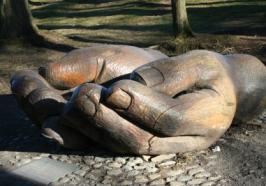 Wooden hands sculpture on west side of Derwent Water.
Wooden hands sculpture on west side of Derwent Water.


